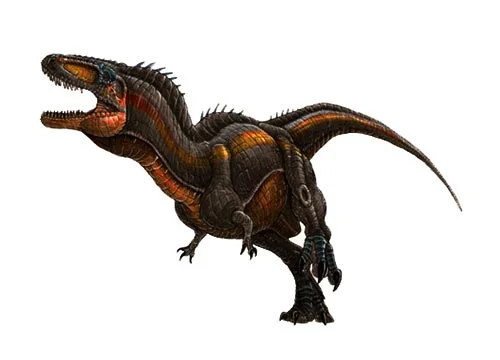Mapusaurus (Earth lizard)

Mah-puh-sore-us
Rodolfo Coria & Philip J. Currie - 2006
Carnivore
Estimated up to 12 meters long
Large Theropod
M. roseae (type)
Argentina - Huincul Formation
Late Cretaceous, 100-90 million years ago
Mapusaurus Facts
Mapusaurus was a large theropod dinosaur that lived during the Late Cretaceous period, around 100 to 90 million years ago, in what is now Argentina. Its name means “Earth lizard”, reflecting its size and power as one of the largest carnivorous dinosaurs of all time.
Mapusaurus was a member of the carcharodontosaurid family of theropod dinosaurs, which also includes other large predators like Giganotosaurus and Carcharodontosaurus. Like these other dinosaurs, Mapusaurus was a bipedal predator with sharp teeth and powerful jaws that could deliver devastating bites to its prey.
Based on estimates from closely related dinosaurs, Mapusaurus is thought to have grown up to 12 meters (39 feet) in length and weighed as much as 6 to 8 metric tons (6.6 to 8.8 short tons). Its skull was broad and powerful, with blade-like teeth that were well-suited for tearing flesh.
One of the most remarkable features of Mapusaurus is that it is known from a large number of fossils that were discovered together, indicating that this dinosaur may have hunted in groups. The fossils were found in the same rock formation as those of another large predator, Giganotosaurus, and several species of herbivorous dinosaurs.
The discovery of these fossils has led to new insights into the behavior and ecology of large theropod dinosaurs. Some scientists speculate that Mapusaurus and its relatives may have hunted cooperatively, like modern-day wolves or lions, to take down large prey. Others suggest that they may have been opportunistic scavengers that fed on the remains of other animals.
Overall, Mapusaurus is an important and intriguing dinosaur that has helped to expand our knowledge of theropod dinosaur evolution and behavior during the Late Cretaceous period in South America.



